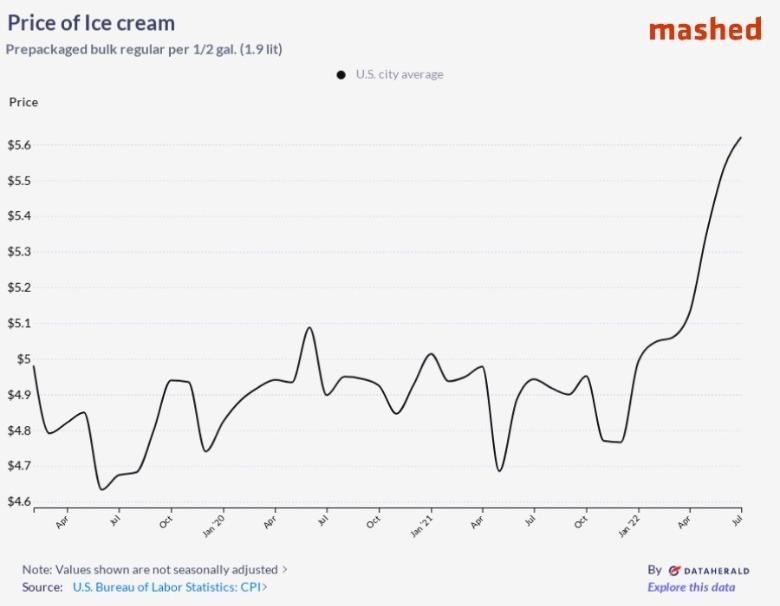Here's How Expensive Ice Cream Really Is With Inflation
The 2022 global inflation crisis is not yet in our rearview mirror, but it may be on the horizon. Certain consumer goods that shoppers were beginning to forgo for their high prices are finally starting to mellow down to reasonable price points, such as broiler meat (aka chicken), which is seeing a significant increase in production after months of scarcity, according to a USDA report. With President Biden's Inflation Reduction Act in effect as of August 17, financial market strategist Art Hogan told Forbes that today's high inflation levels could subside "by the middle of 2023."
As is to be expected, though, some food products will take longer than others to make it through to the other side. Ground beef, for instance, has risen nearly 30% over the last three years, per data compiled for Mashed by the U.S. Bureau of Labor Statistics. Likewise, wheat products like flour may also take longer to recover from inflation as long as the war in Ukraine persists. Unfortunately, ice cream is also at the caboose of the end-of-inflation race.
Blame it on the milk
According to U.S. Bureau of Labor Statistics data that shows the average U.S. city price of prepackaged ice cream from February 2019 to July 2022, there have been far more soaring scoops than dropping dips in the recent price history of the frozen dessert. After a couple years of fairly regular fluctuation that more or less lines up with pre-crisis inflation rates (which averaged around a 3.8% annual increase, per WorldData), the cost of ice cream nearly flew off the charts in 2022. From April to July, half gallons of the dessert jumped from $4.97 to $5.62, representing a 13% increase.
Leaving out the what Eater calls the "modern repackaging of Americana" (aka the surge of expensive artisanal ice cream brands in chain supermarket freezers), the current high cost of regular (read: not particularly fancy) ice cream comes down to supply-and-demand issues. A month ahead of National Ice Cream Day, the Consumer Price Index found June ice cream prices were up more than 12.5% from last year. Thanks to shortages, it's more expensive than ever for dairy farmers to buy cattle, feed their animals, and hire farm labor, per CoBank. Since milk is a primary ingredient in dairy ice cream, higher farming costs means higher ice cream costs.

